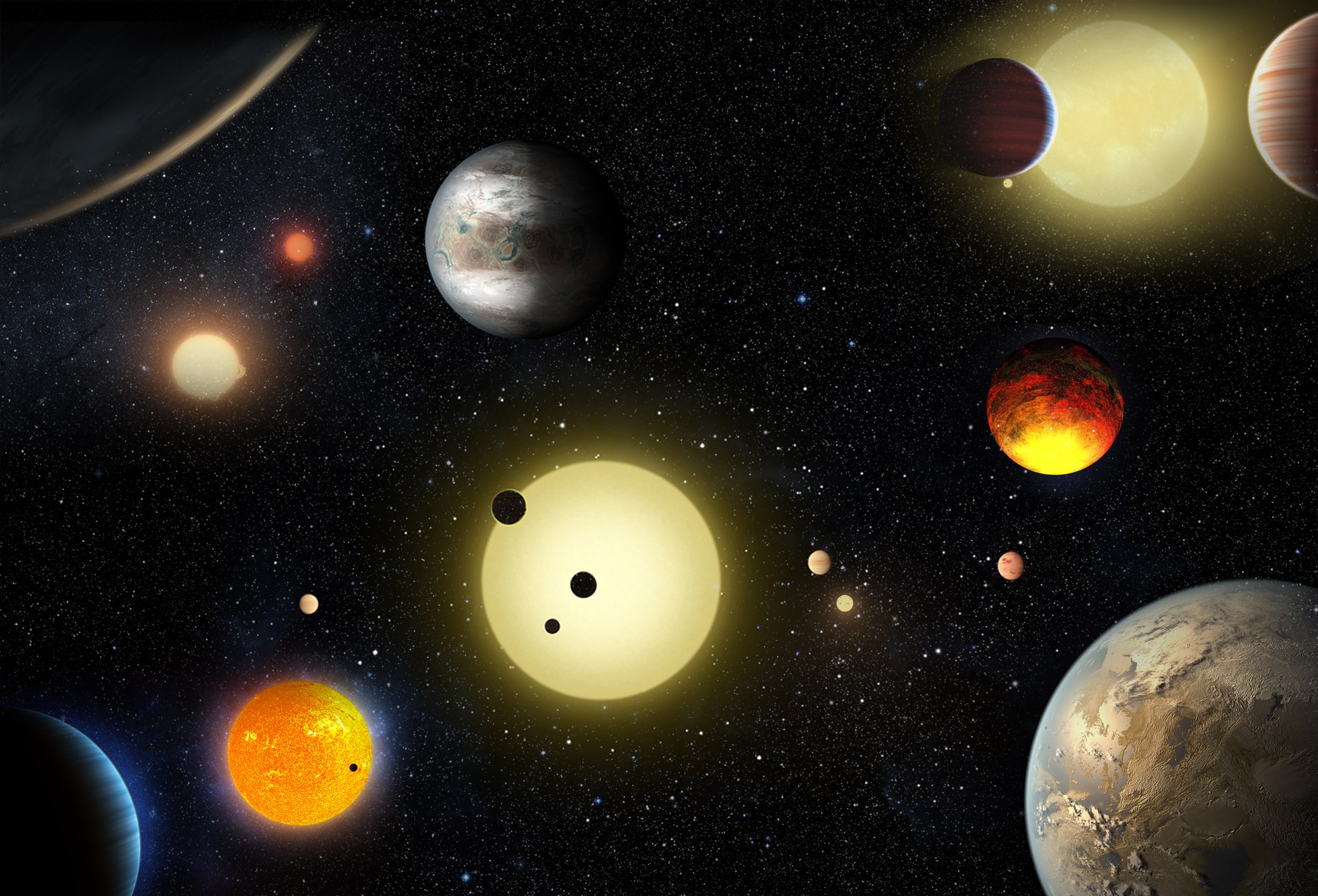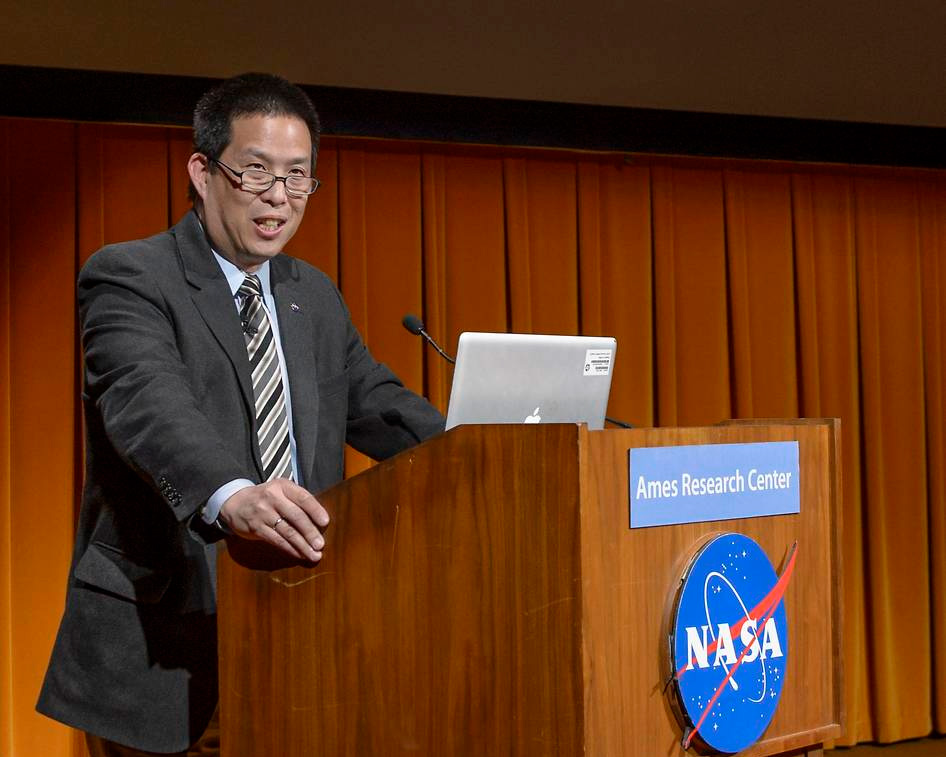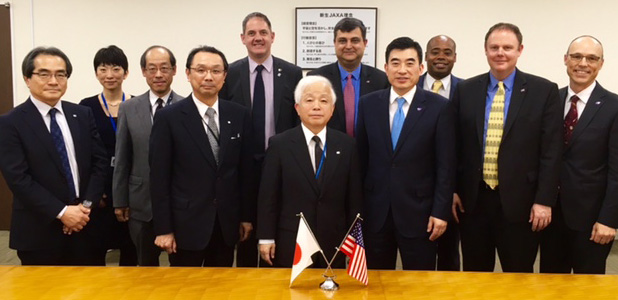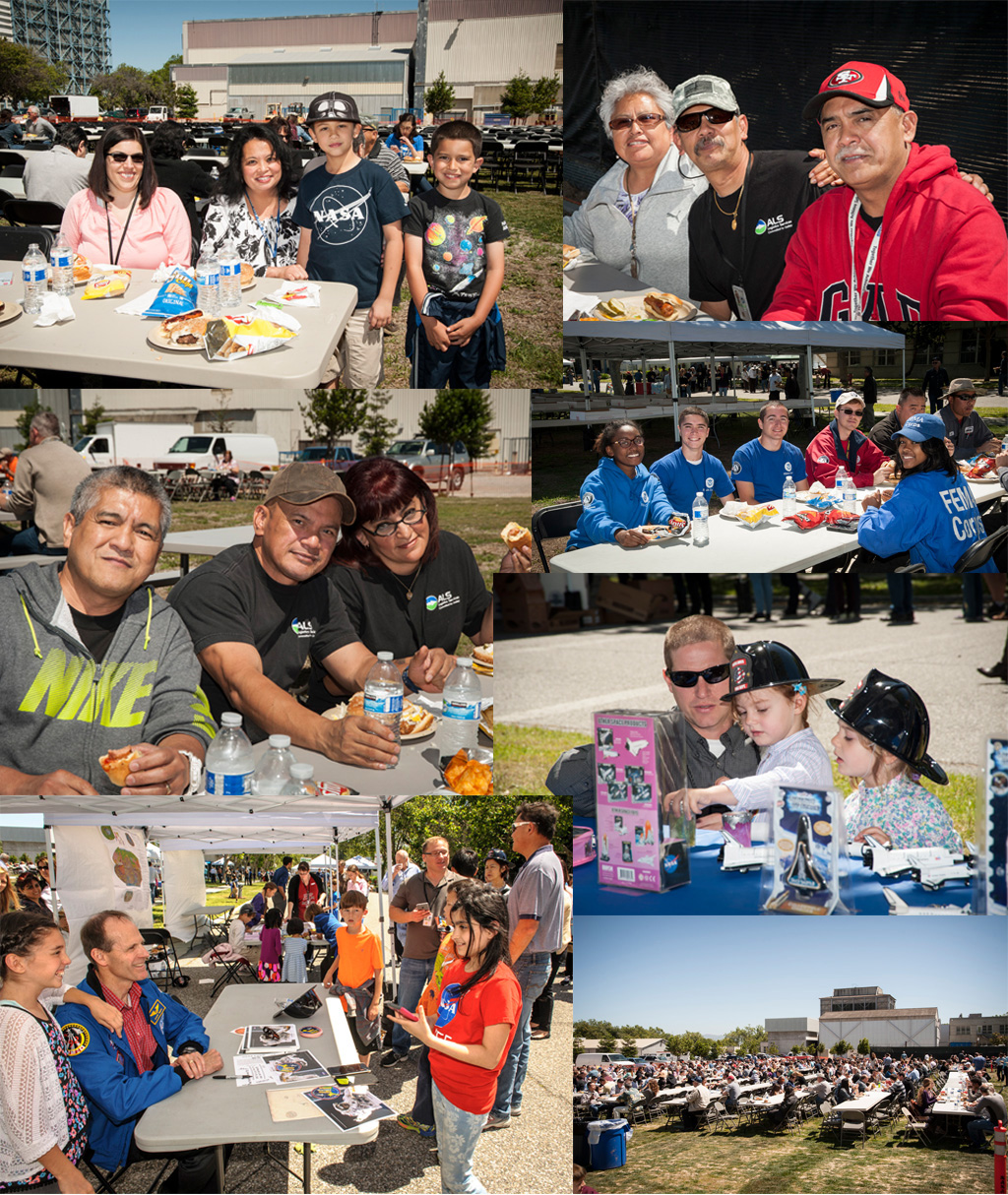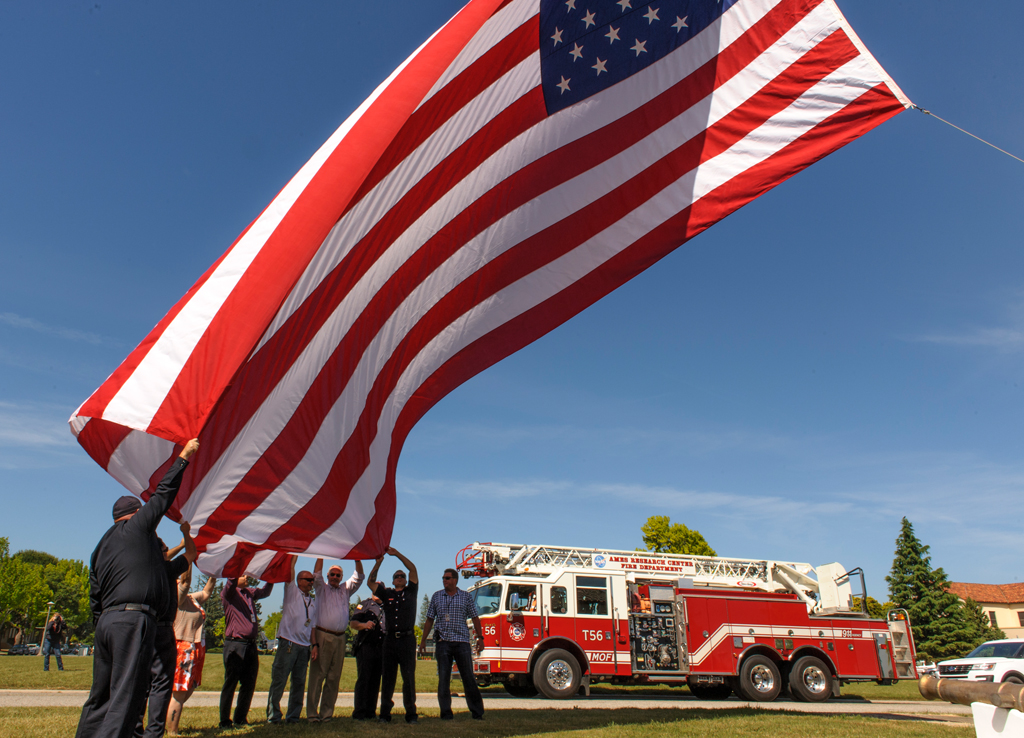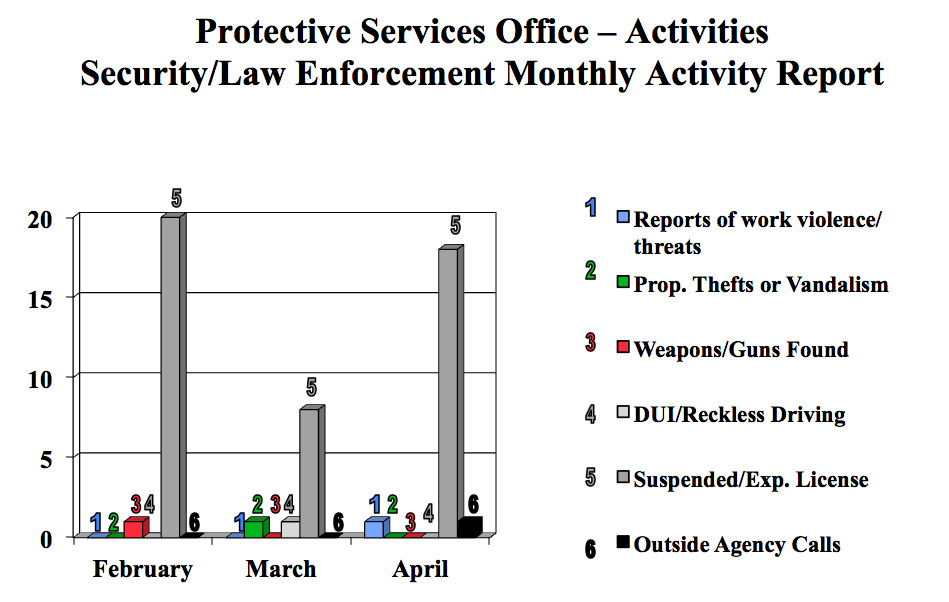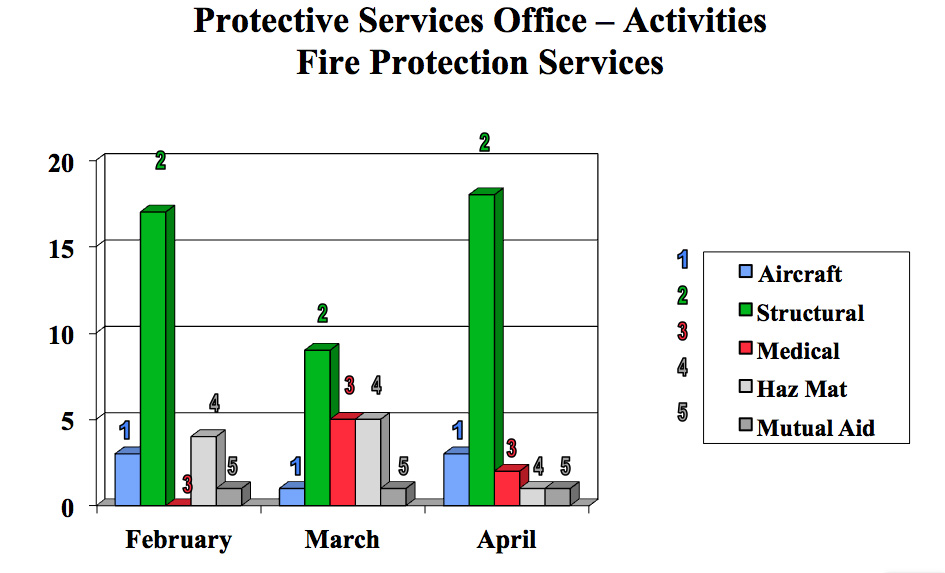Employee Viewpoint Survey – Due June 13
I’d like to make a specific and personal request to all of you to help increase Ames Employee participation in the EVS this year. The results of the survey are taken very seriously by both Center and Agency leadership. We are continuing to work on feedback received from previous surveys and want to hear what you have to say. Here’s why:
- Your responses will be used to continue to make NASA a great place to work
- Learning what matters most to you—the Ames workforce—will guide us in shaping the Center’s future
- Ames management will actively use the survey results to determine what is working and also to uncover and address areas where we need to do better.
If you have not received your survey email, please contact EVNN@opm.gov to request your individualized link.
What you think really does matter to me and the Ames leadership team! Please take a few moments to fill out the survey. Together, we can make NASA and Ames an even better place to work.
Eugene L. Tu
Center Director
NASA’s Kepler Mission Has Verified 1,284 New Planets – the Single Largest Finding of Planets to Date
by Michele Johnson
“This announcement more than doubles the number of confirmed planets from Kepler,” said Ellen Stofan, chief scientist at NASA Headquarters in Washington. “This gives us hope that somewhere out there, around a star much like ours, we can eventually discover another Earth.”
Analysis was performed on the Kepler space telescope’s July 2015 planet candidate catalog, which identified 4,302 potential planets. For 1,284 of the candidates, the probability of being a planet is greater than 99 percent – the minimum required to earn the status of “planet.” An additional 1,327 candidates are more likely than not to be actual planets, but they do not meet the 99 percent threshold and will require additional study. The remaining 707 are more likely to be some other astrophysical phenomena. This analysis also validated 984 candidates previously verified by other techniques.
“Before the Kepler space telescope launched, we did not know whether exoplanets were rare or common in the galaxy. Thanks to Kepler and the research community, we now know there could be more planets than stars,” said Paul Hertz, Astrophysics Division director at NASA Headquarters. “This knowledge informs the future missions that are needed to take us ever-closer to finding out whether we are alone in the universe.”
Kepler captures the discrete signals of distant planets – decreases in brightness that occur when planets pass in front of, or transit, their stars – much like the May 9 Mercury transit of our sun. Since the discovery of the first planets outside our solar system more than two decades ago, researchers have resorted to a laborious, one-by-one process of verifying suspected planets.
This latest announcement, however, is based on a statistical analysis method that can be applied to many planet candidates simultaneously. Timothy Morton, associate research scholar at Princeton University in New Jersey and lead author of the scientific paper published in The Astrophysical Journal, employed a technique to assign each Kepler candidate a planet-hood probability percentage – the first such automated computation on this scale, as previous statistical techniques focused only on sub-groups within the greater list of planet candidates identified by Kepler.
“Planet candidates can be thought of like bread crumbs,” said Morton. “If you drop a few large crumbs on the floor, you can pick them up one by one. But, if you spill a whole bag of tiny crumbs, you’re going to need a broom. This statistical analysis is our broom.”
In the newly validated batch of planets, nearly 550 could be rocky planets like Earth, based on their size. Nine of these orbit in their sun’s habitable zone, which is the distance from a star where orbiting planets can have surface temperatures that allow liquid water to pool. With the addition of these nine, 21 exo planets now are known to be members of this exclusive group.
“They say not to count our chickens before they’re hatched, but that’s exactly what these results allow us to do based on probabilities that each egg (candidate) will hatch into a chick (bona fide planet),” said Natalie Batalha, co-author of the paper and the Kepler mission scientist at NASA Ames. “This work will help Kepler reach its full potential by yielding a deeper understanding of the number of stars that harbor potentially habitable, Earth-size planets — a number that’s needed to design future missions to search for habitable environments and living worlds.”
Of the nearly 5,000 total planet candidates found to date, more than 3,200 now have been verified, and 2,325 of these were discovered by Kepler. Launched in March 2009, Kepler is the first NASA mission to find potentially habitable Earth-size planets. For four years, Kepler monitored 150,000 stars in a single patch of sky, measuring the tiny, telltale dip in the brightness of a star that can be produced by a transiting planet. In 2018, NASA’s Transiting Exoplanet Survey Satellite will use the same method to monitor 200,000 bright nearby stars and search for planets, focusing on Earth and Super-Earth-sized.
Ames manages the Kepler missions for NASA’s Science Mission Directorate in Washington. The agency’s Jet Propulsion Laboratory in Pasadena, California, managed Kepler mission development. Ball Aerospace & Technologies Corporation operates the flight system, with support from the Laboratory for Atmospheric and Space Physics at the University of Colorado in Boulder.
For more information about the Kepler mission, visit: https://www.nasa.gov/kepler
All Hands Meeting Provides Status of the Center
Solar Impulse 2 Visits NASA’s Ames Research Center in California’s Silicon Valley
by Darryl Waller
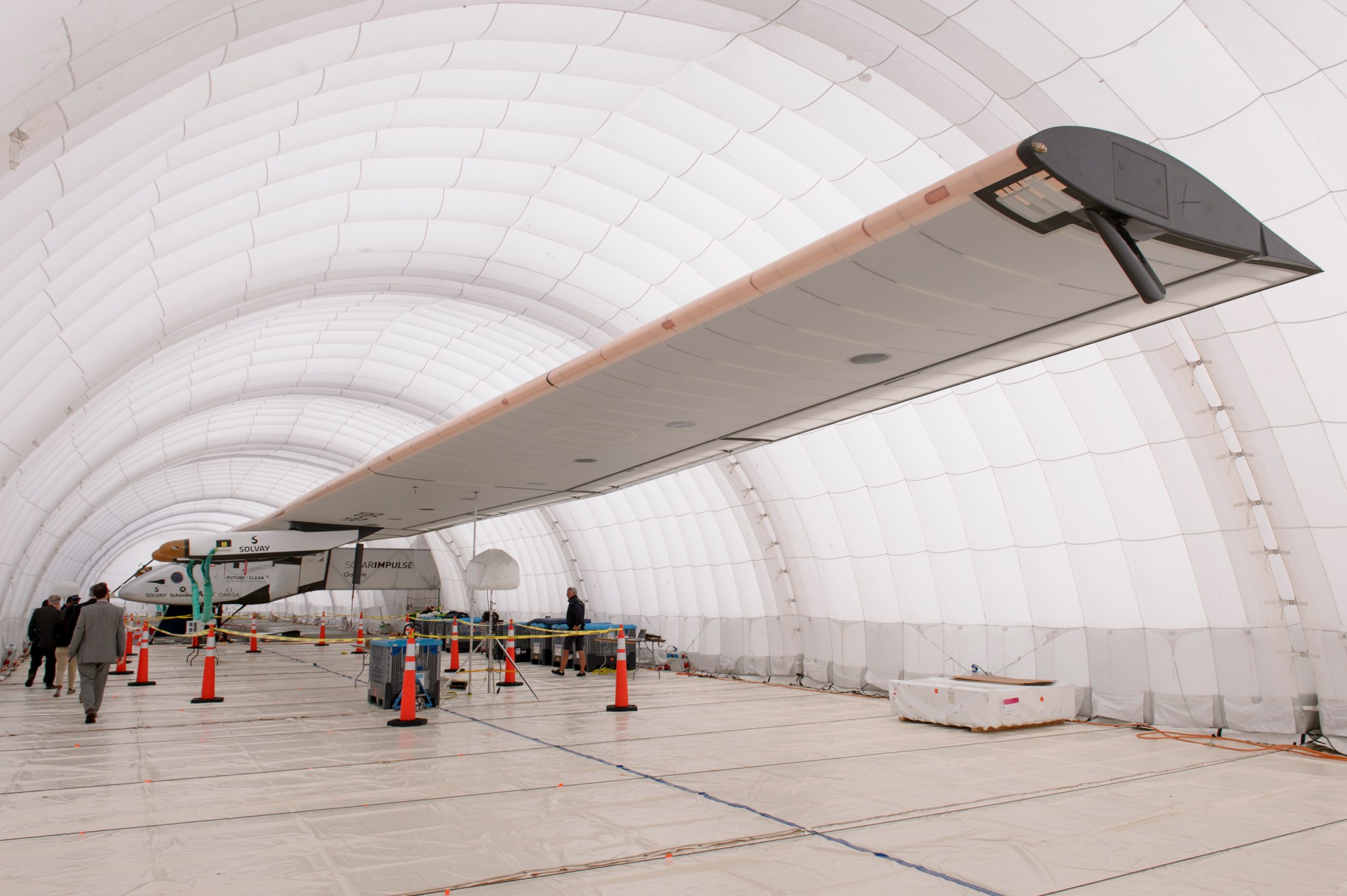
NASA Ames employees were treated to a bit of history this month, with the stopover of the Solar Impulse 2 aircraft during its historic around-the-world-solar-powered flight.
The trip began in 2015 from Abu Dhabi, United Arab Emirates and arrived at Moffett Field direct from Kalaeloa, Hawaii by way of Nagoya, Japan. The privately financed, Swiss venture, is an experimental, solar-powered aircraft created to achieve the first circumnavigation of the planet by a piloted, fixed-wing aircraft fueled solely by the sun’s energy.
“The primary purpose of this adventure,” said Bertrand Piccard, initiator, chairman and pilot of Solar Impulse, “is to demonstrate that modern clean technologies can achieve the impossible and encourage everyone to use these same energy efficient solutions on the ground in their daily lives for mobility, construction, lighting, heating, cooling and more.”
During its stay, the fragile-looking, two-ton craft was housed in a specially built hangar tailored to its 73-foot length and 236-foot wingspan, with light, diaphanous panels which allowed sunlight to filter through and charge more than 17,000 photovoltaic solar cells on top of the wings while parked.
Solar Impulse 2’s four electric engines are powered exclusively by sunlight collected in the solar cells, turning large, 13-foot propellers, each providing 17.5 HP, moving it along at an average cruise speed of 34 mph (30 knots). The plane is unpressurized, equipped with a state-of-the-art automatic pilot for long distance flying, and eight oxygen bottles to supply air to the pilot at altitudes up to 39,000 feet.
The plane traveled from Hawaii to California in just over 62 hours, far exceeding Amelia Earhart’s record 1935 solo flight over the same distance of 18 hours. However, unlike Earhart, this flight was powered by a clean, renewable energy source. The aircraft cruises at 28,000 feet during the day while recharging in flight, descending to 8,000 feet in darkness. The craft observes visual flight rules during the trip – weather data is collected by the flight support team and relayed to the pilot in real time, allowing vital route adjustments to be made while airborne.
“Last year, we demonstrated that Solar Impulse is capable of flying five days and five nights non stop: the airplane, the technologies, the human being,” said André Borschberg, chief executive officer and pilot of Solar Impulse. “Now what we want to do is continue our flight around the world and demonstrate that these technologies can be used, not only in an airplane, but on the ground. That is why Bertrand initiated the project and I am moved that he will be experiencing full day and night cycles without any fuel.”
The pilots are allowed to use the automatic pilot for only 20 minutes at a time, and practice yoga and meditation techniques to cope during the long lights. Permitting and flight planning is performed through the Federal Aviation Administration and with governments around the world.
The Solar Impulse 2 departed Ames on May 2, 2016 en route to Phoenix, Arizona. Its itinerary includes stops at Tulsa, Oklahoma, Dayton, Ohio and, finally, New York, New York, before returning to Abu Dhabi later this year.
NASA, France to Collaborate on Planetary Science and Space Exploration
by Kimberly Williams
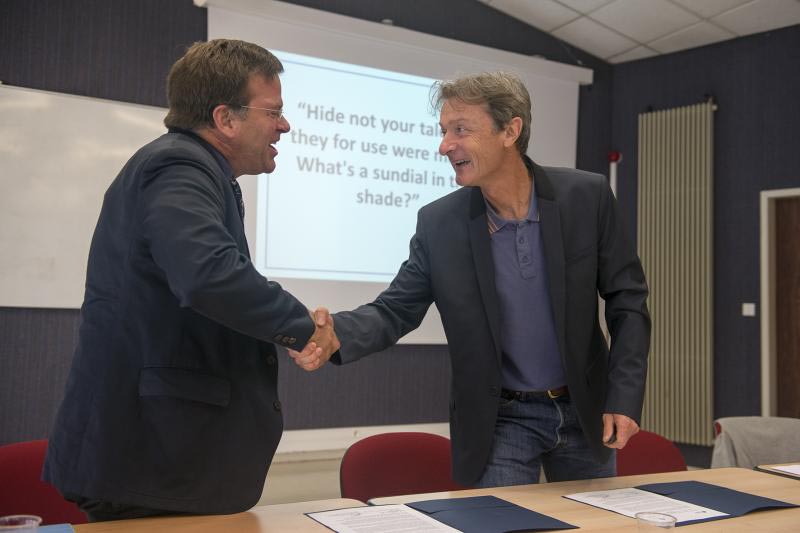
NASA and the Astrophysics and Planetology Research Institute (IRAP), located in Toulouse, France, have signed an affiliate member statement with NASA’s Solar System Exploration Research Virtual Institute (SSERVI), which supports lunar and planetary science research to advance human exploration of the solar system through scientific discovery. With the establishment of a NASA SSERVI French team, the planetary science community in France can now participate in SSERVI programs on a no-exchange-of-funds basis.
“France’s impressive proposal to SSERVI offers scientific and technological expertise in the study of the Moon and Mercury, Vesta and Ceres asteroids in the Dawn mission, and comets like Churuymov-Gerasimenko (67P) of the ongoing Rosetta mission,” said Dr. Yvonne Pendleton, director of SSERVI. “We are eager to see what scientific discoveries result from this partnership.”
Dr. Patrick Pinet, who submitted the proposal, is a senior scientist at the French National Research Center (CNRS) and deputy-director of the IRAP laboratory. Belonging to the Midi-Pyrénées Observatory, the laboratory benefits from the support of the CNRS’ National Institute for Study of the Universe, the Paul Sabatier Toulouse III University, and the French Space Agency. “The lab works closely with the European Space Agency, the Japanese Aerospace Exploration Agency, the Indian Space Research Organization, and now SSERVI. This is a special moment for France,” said Pinet.
“Our French partners have put together a compelling proposal that outlines multiple topics for potential collaborative research. This partnership will be important to NASA and its international partners who are successfully conducting the ambitious activities of exploring the solar system with robots and humans,” said Greg Schmidt, deputy director of SSERVI, who directs international partnerships.
SSERVI, a virtual institute of domestic and international partnerships, enables cross-team and interdisciplinary research to push the boundaries of science and exploration. Located at NASA Ames, SSERVI is funded jointly by the agency’s Science Mission and Human Exploration and Operations Mission directorates at NASA Headquarters in Washington.
Ames Program Manager Michael Fletcher Selected for Mike Mansfield Fellowship
by Margo Grimm Eule
This summer, Ames Research Center Program Manager Michael Fletcher will begin a year-long Mike Mansfield Fellowship, a unique opportunity to develop an in-depth understanding of the government of Japan, its policy-making processes, and the political, economic and strategic dimensions of the U.S.-Japan relationship. Fletcher is one of 10 federal government officials selected for this year’s group of Mansfield Fellows, the twenty-first class to enter the Mike Mansfield Fellowship Program since it was established by Congress in 1994.
The program was created to build a corps of U.S. government officials with substantial Japan expertise. During their year in Japan, Mansfield Fellows work side by side with their Japanese counterparts in placements that are primarily in Japanese government agencies. The knowledge and contacts they develop during their Fellowship year facilitate their work on Japan and Asia-related programs and policies when they return to federal government service.
Fletcher will begin his fellowship in Japan with a seven-week homestay and language training in Ishikawa Prefecture. This will be followed by 10 months of practical experience in a Japanese government agency or ministry in Tokyo.
In April, Fletcher had an opportunity to visit some of the Japanese offices in which he will be working in during his fellowship year. He visited when he and colleagues from NASA traveled to Tokyo for meetings with representatives of the Japan Aerospace Exploration Agency (JAXA) and others interested in NASA’s aeronautics research and management activities.
During his placements, Fletcher will seek to develop a comprehensive understanding of key Japanese government office roles and responsibilities that are central to scientific policy, research and development within the aerospace sector. Upon his return to NASA, he hopes to use the knowledge gained during his fellowship to strengthen existing collaborative efforts while seeking out and fostering new partnerships where opportunities exist.
Given our shared interests and shifting national priorities, this is an ideal time to strengthen U.S.-Japan cooperation in space and aeronautics,” Fletcher said. “I’m looking forward to this opportunity to further my understanding of Japan’s government and facilitate strategic links between NASA and potential partners in Japan.”
Fletcher is the second Mansfield Fellow to represent NASA since the Fellowship Program was established. Amy Jackson, who recently was appointed to serve as the Pharmaceutical Research and Manufacturers of America (PhRMA) representative in Japan, participated in the Fellowship Program as a representative of NASA from 1995-1997. She and Fletcher are part of a Mansfield Fellowship network that currently includes 140 Fellows, representing 27 U.S. agencies, commissions and the U.S. Congress.
The Mike Mansfield Program is administered by the Maureen and Mike Mansfield Foundation – a 501(c)3 organization that promotes understanding and cooperation in U.S.-Asia relations — with funding from the U.S. Department of State. The Mansfield Foundation was established in 1983 to honor Mike Mansfield (1903-2001), a revered public servant, statesman and diplomat who played a pivotal role in many of the key domestic and international issues of the 20th century as U.S. congressman from Montana, Senate majority leader and finally as U.S. ambassador to Japan.
Food, Exhibits and Demonstrations Draw Crowds at Take Your Child to Work Day
Ames employees were invited to NACA Park on April 28, 2016 for an Exchange Council-sponsored picnic to help celebrate this year’s National “Take Your Child To Work Day.” Employees and their families enjoyed complimentary pizza, hot dogs, burgers, veggie burgers and cupcakes.
Designed to be more than a career day, the “Take Your Child To Work Day” program goes beyond the average practice of “shadowing” an adult. Exposing girls and boys to what a parent or mentor in their lives does during the work day is important. The experience shows them the value of their education, helping them discover the power and possibilities associated with a balanced work and family life. It also provides them with an opportunity to share how they envision the future, and allows them to begin steps toward their end goals in a hands-on and interactive environment is key to their achieving success.
Kids observed NASA exhibits in NACA Park, where a variety of Ames organizations shared their work with participants. There was a meet-and-greet, photo opportunity with NASA astronaut Steve Smith. The Space Cookies Team gave demonstrations and showcased competitive robotics for girls and kids were given the opportunity to remote control operate a rover. In addition, there were Lunar Micro Rovers and FIRST Robotics demonstrations.
The Office of Education and Public Outreach also presented the 2016 Spring Poster Symposium during the event. This symposium served as a great opportunity for Ames interns to showcase the research they performed during their 16-week internship at Ames.
High-Tech Silicon Valley Executives Share Their Work Experiences
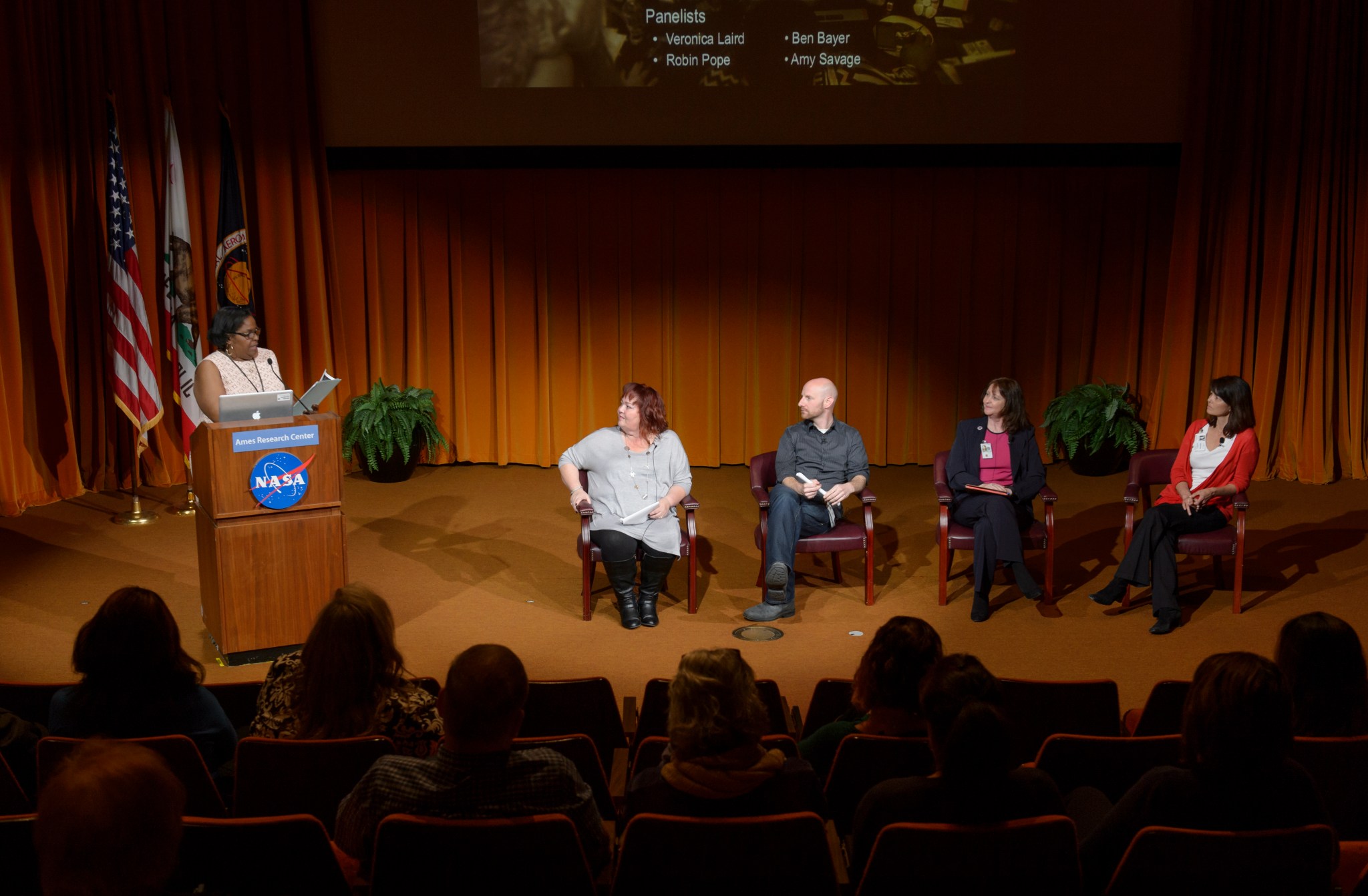
HACE Celebrates Cinco de Mayo with 14th Annual Hispanic Heritage Golf Tournament

Change up the Scenery and Get Some Exercise by Biking to Work

Ames Veterans Advisory Committee Observes Memorial Day
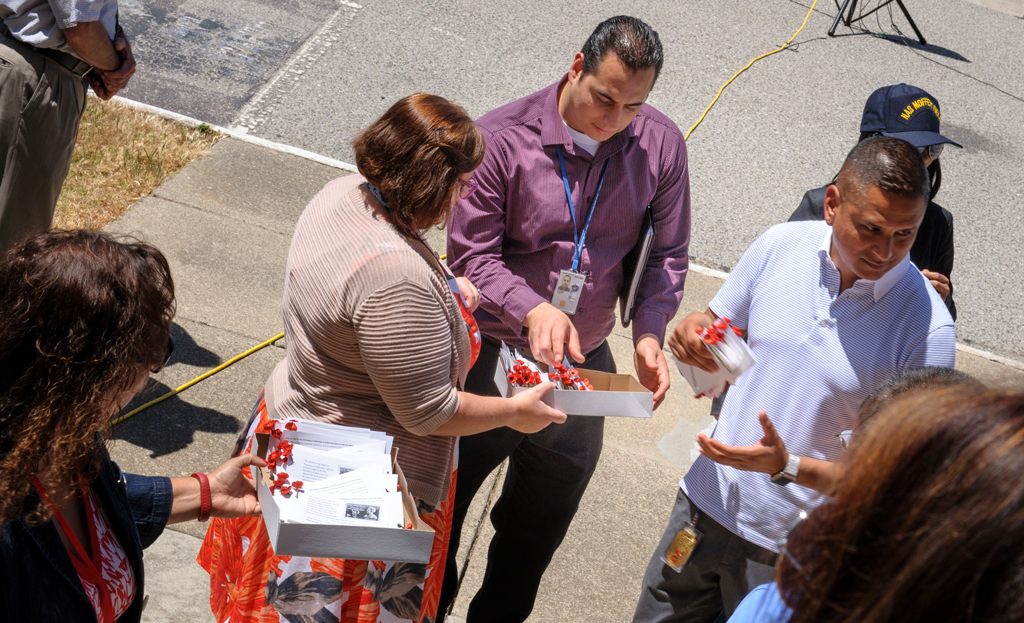
NASA Health and Fitness Day Celebrated with Spring Fun Run and Outdoor Yoga
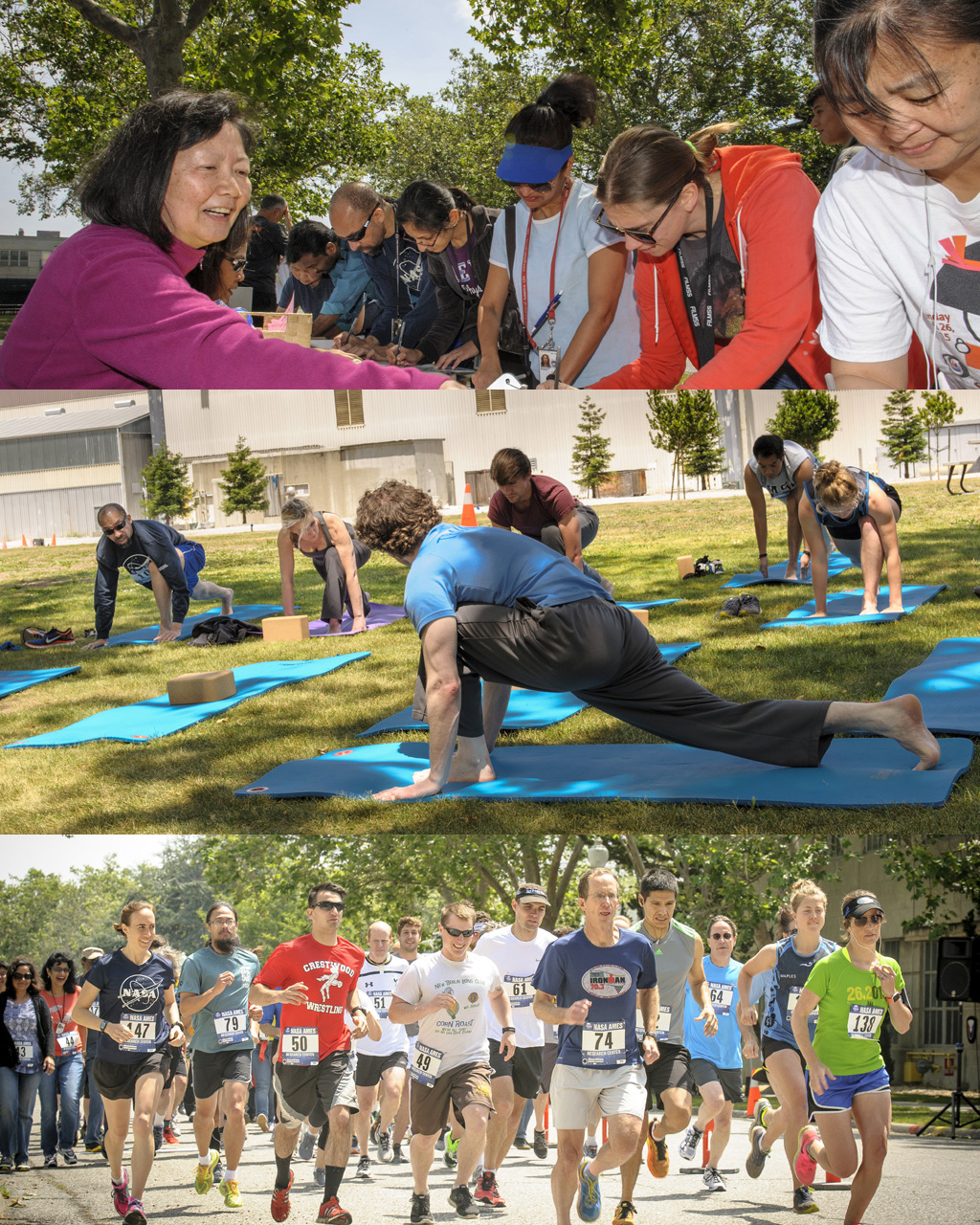
A statistical summary of activities of the Protective Service Division’s Security/Law Enforcement and Fire Protection Services units for the three-month period ending April 2016 is shown below.
Ames Ongoing Clubs/Monthly Events Calendar
African American Advisory Group (AAAG) Mtg., last Tuesday of each month, 12:00 – 1:00 p.m., Building N-255, Room 101C. POC: Porsche Parker, ext. 4-0044.
Asian American Pacific Islander Advisory Group (AAPIAG) Meeting, Third Thursday each month, 1:00 p.m. – 2:00 p.m., Building N213, Room 204A. POC: Tony Damian, tony.a.damian@nasa.gov
Moffett Aikido Club, Monday and Wednesday evenings, 6:30 p.m., Building 944. Aikido is a non-competitive, defensive martial art known as the “Way of Harmony.” POC: Diane Pereda (650) 575-9070 or Robert Dean (650) 787-1007, email: mfaikido@aol.com
Ames Amateur Radio Club, third Thursday of each month, noon, Building N-T28 (across from Building N-255). POC: George Tucker, at ext. 4-2200.
Ames Bluegrass Club, every Tuesday from 11:30 a.m. to 1:00 p.m. in Building 944. Players of all instruments and all levels are welcome, but we are particularly interested in experienced players willing to help improve the group’s musical skills. POC: Bob Haberle at ext. 4-5494 or email: robert.m.haberle@nasa.gov
Ames Bocce Ball Club, Ames’ newest Exchange-sponsored club is seeking members. POC: Mike Lindsay email: michael.c.lindsay@nasa.gov
Ames Bowling League, Thursdays, 6:15 p.m. at Fourth Street Bowl in San Jose. Need regular and subsitute bowlers. For sign up questions contact Michael Hom at ext. 4-0302 or Mina Cappuccio at ext. 4-1313.
Ames Contractor Council Meeting, first Wednesday of each month, 11:00 a.m., Building N-200, Committee Room. POC: Herb Finger at ext. 4-6598.
Ames Federal Employees Union (AFEU) Mtg.,third Wednesday of each month, Noon. Building N-204, Room 101. Guests welcome. Check for schedule changes at: http://www.afeu.org. POC: Paul K. Davis, ext. 4-5916.
Ames Golf Club, Members have the opportunity to play approximately 13 tournaments per year at a variety of 18-hole golf courses in the Bay and Monterey Area. POC: Barry Sullivan: Barry.T.Sullivan@nasa.gov.
The Hispanic Advisory Committee for Excellence (HACE) Meeting., first Thursday of each month, 11:30 a.m. – 12:30 p.m., Building N-255, Room 101C. POC: Jeanette Zamora, jeanette.zamora-ortega-1@nasa.gov.
Ames Jazz Band Club, Thursday evenings, 5:30 p.m. – 7:00 p.m., Building 944. POC: Ralph Bach, email: ralph.e.bach@nasa.gov
Jetstream Toastmasters, Mondays, 12:00 p.m. – 1:00 p.m., Building N-262, Room 100. POC: Tim Steiger, ext. 4-0195, tim.steiger@nasa.gov. Web: http://jetstream.freetoasthost.com
Native American Advisory Committee (NAAC) Bi-Monthly Meeting, First Thursday of the month, 11:00 a.m. – 11:45 a.m., Building 19, Room 1096. For more information contact Anita Abrego at Anita.I.Abrego@nasa.gov, or call ext. 4-2565.
Ames Nimble Knitters Club, Mondays, 11:30 a.m., Building. N-210, Room 103. POC: Diane Alexander at ext. 4-3140 or email diane.alexander-1@nasa.gov. All knitters and crocheters are welcome to attend and participate in our charity projects.
Ames Roller Hockey Club, meets daily from Noon to 1:00 p.m. at rink on north end of the 80-foot-by-120-foot wind tunnel. Players should have experience skating and must wear protective equipment. POC: James Prunty, james.a.prunty@nasa.gov
Ames Safety Committee, third Thursday of each month, 10:00 a.m. – 11:00 a.m., Building N-237, Room 200. POC: John Livacich, jlivacich@mail.arc.nasa.gov, ext. 4-3243.
Women’s Influence Network (WIN), first Wednesday of each month, Building N-244, Room 209, Noon – 1:00 p.m., POC: Ali Guarneros Luna, ali.guarnerosluna@nasa.gov
Exchange Information
Information about products, services and opportunities provided to the employee and contractor community by the Ames Exchange Council. Visit our web site at: http://exchange.arc.nasa.gov
Beyond Galileo Gift Shop N-235 in the cafeteria, 8:00 a.m. – 2:00 p.m., ext. 4-6873
Visitor Center Gift Shop (Exploration Center), Tues-Fri, 10:00 a.m. – 4:00 p.m., Sat. – Sun, noon – 4:00 p.m., ext. 4-5412
Remember to purchase your baby shower, birthday and holiday gifts at Ames’ two gift shops!
Mega Bites Cafeteria N-235, Manager Jason Hamed, ext. 4-5969, Mon – Fri, 6:00 a.m. – 2:00 p.m., ext. 4-5969/Catering contact Karen Mcintyre, 650 444-2241
The SpaceBar: Subs & Burgers, Bldg. 3, Hours are: Mon through Fri from 11:00 a.m. – 7:00 p.m. See: http://exchange.arc.nasa.gov/cafe/menu.html for menu items.
NASA Lodge (Bldg. 19) (650) 603-7100
Where to stay when you’re too tired to drive home? What about the lodge?! Current Rates: Bldg. 19 (43 rooms), rate: $65/night ($5 each additional adult); Bldg. 583 A&B (150 rooms), rate: $55/night ($5 each additional adult); B547 rate $60/night (for large groups)
Ames Swim Center (N-109) (650) 603-8025
The swimming pool is now open. Hours of operation are as follows (lap swim only): M-F 10:00 a.m. – 1:00 p.m. and M-F 3:00 p.m. – 6:00 p.m. The pool is heated year round. POC: Ryan Storms, pool manager (650) 603-8025. Memberships: Yearly access $350, 3 Month $100, Single day use $5
Exchange Basketball Gym, Building 2, POC: Manager Bryan Henshaw, (650) 603-9717, Hours of operation: M-F 11:00 a.m. – 1:30 p.m. and M-F 4:00 p.m. – 7:00 p.m. The basketball gym is a full NBA regulation size court and is free to use.
RV lots available. Call to reserve a space at (650) 604-0698. Civil Servants and Active Military $50/month. Contractors and Retired Personnel $100/month
Chase Park reservations, call ext. 4-4948
NACA Park reservations, call ext. 4-4948
Ames Emergency Announcements
To hear the centerwide status recording, call (650) 604-9999 for information announcements and emergency instructions for Ames employees. You also may listen to 1700 KHz AM radio for the same information.
Ames Cat Network
The Ames Cat Network needs help finding homes for cats trapped at Moffett. They range from feral to abandoned/lost pets. They are tested, altered and inoculated. Call Iris at ext. 4-5824 if you or someone you know are interested in fostering or adopting a cat.
National Aeronautics and Space Administration
Ames Research Center
Moffett Field, CA 94035-1000
The Ames Astrogram is an official publication of Ames Research Center, National Aeronautics and Space Administration.
Managing Editor………………….Matthew Buffington
Editor, Layout and Design……………Astrid Albaugh
Employees can reach the Astrogram Office via email at: astrogram@mail.arc.nasa.gov or by phone at ext. 4-3347. For downloadable pdf copies of each issue, visit the Astrogram website at:
https://www.nasa.gov/ames/astrogram






























